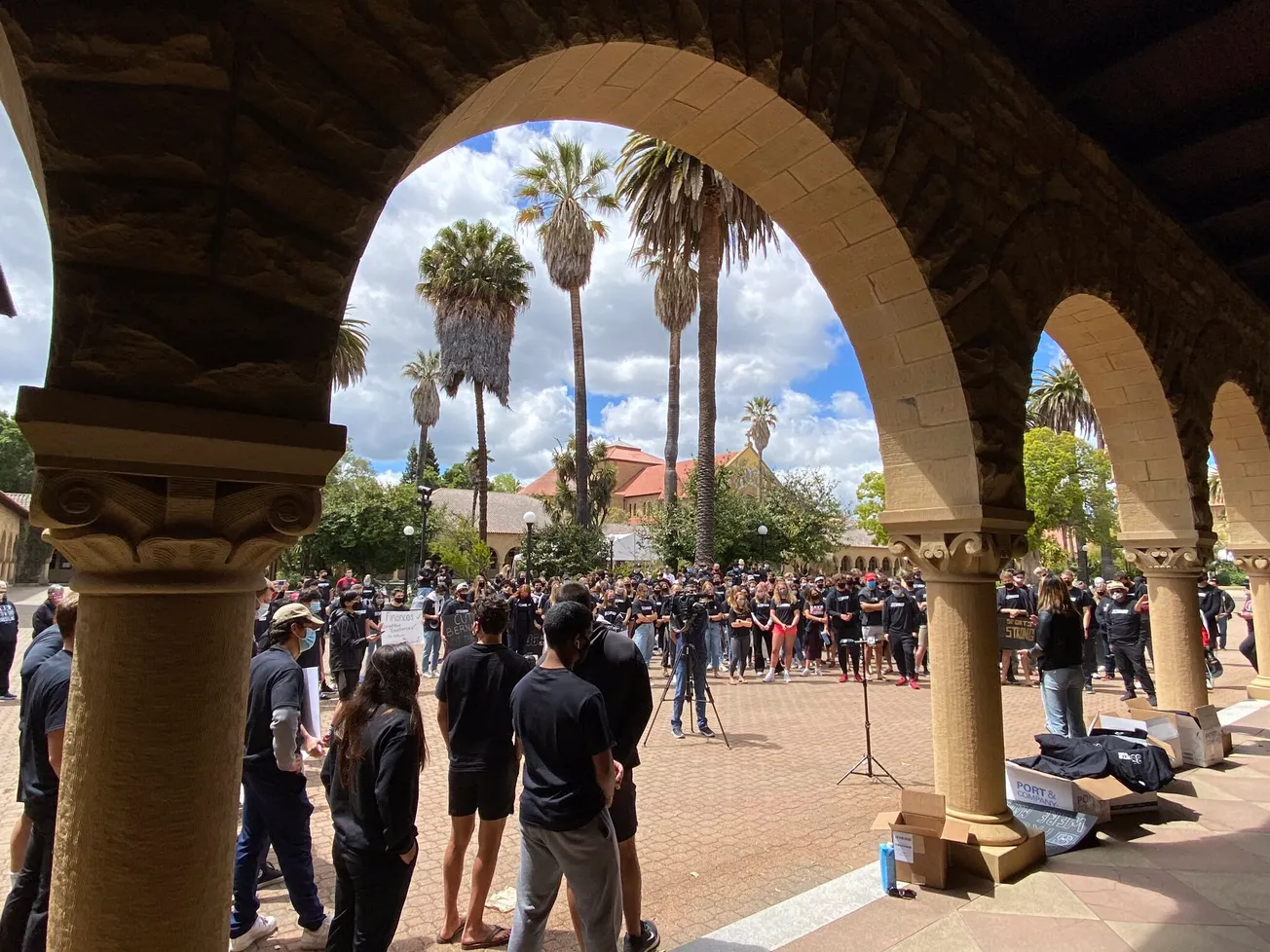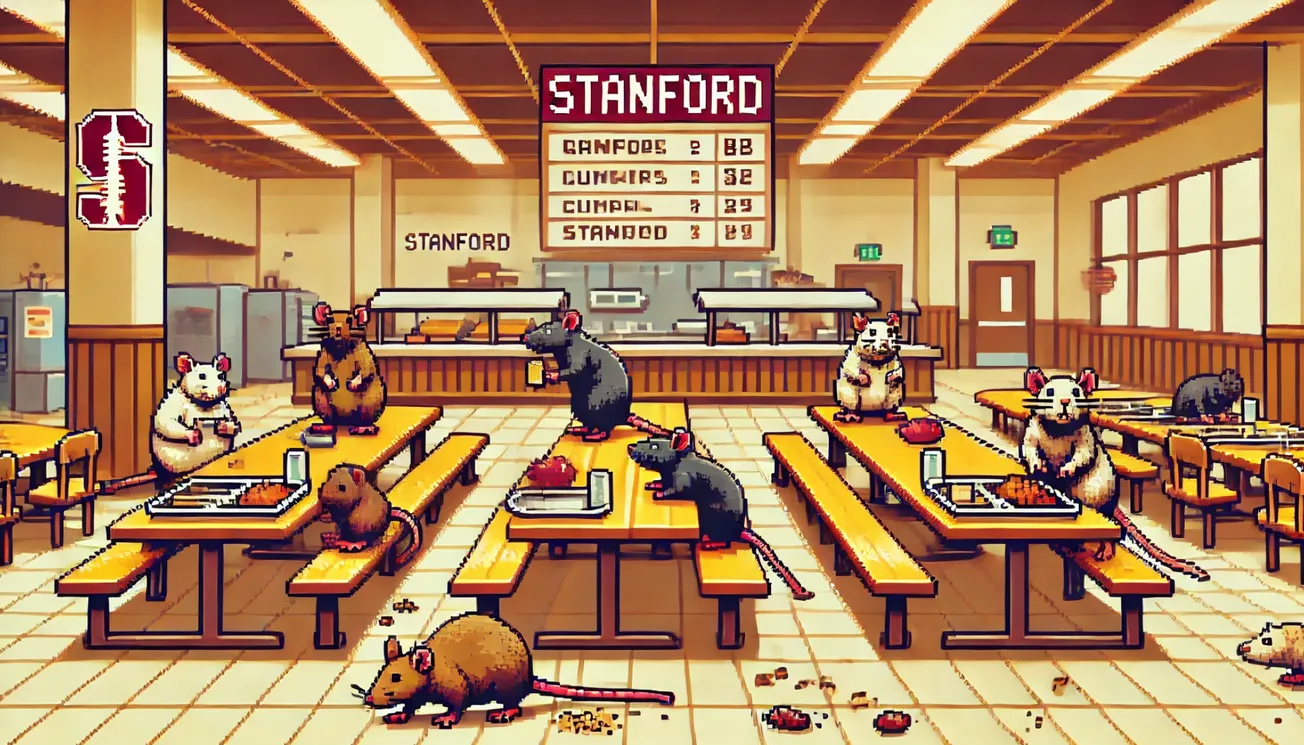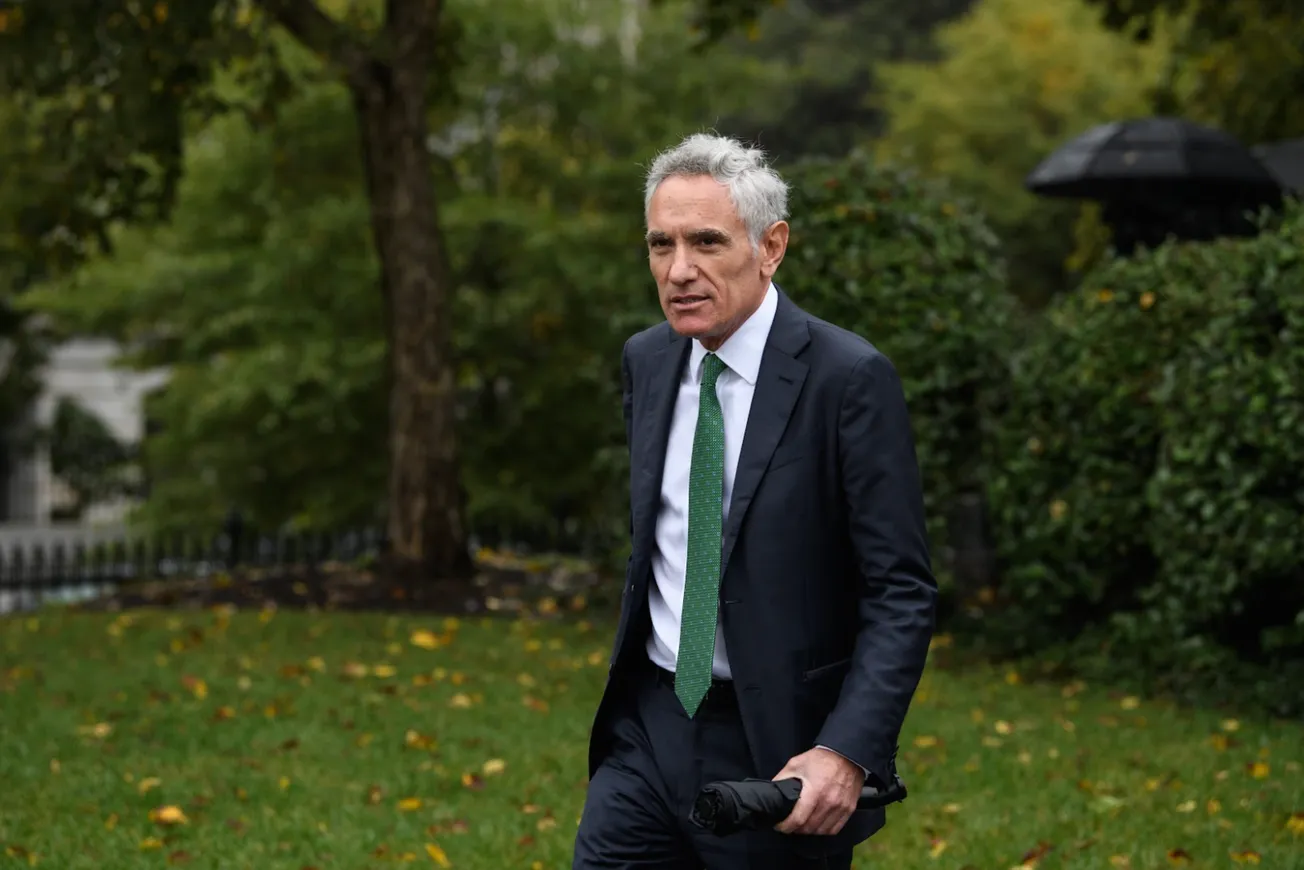Table of Contents
When The Stanford Review learned that a massive protest event with hundreds of people would take place on campus today, we felt that we had to be there to get the facts. As Stanford’s premier outlet for coverage of mobs, sit-ins, angry mobs, blood-curse rituals, mobs blocking traffic, and crowds of activists, people rely on the Review for all their protest news.
The rally was organized by a group called "36 Sports Strong" to encourage the Board of Trustees to reinstate eleven varsity sports teams that were cut in July of last year (men’s fencing, women’s fencing, field hockey, lightweight rowing, men's rowing, co-ed rowing, women's sailing, squash, synchronized swimming, men's volleyball, and wrestling).
Alumni and athletes have campaigned for months to reinstate the teams, without success. The “Keep Stanford Wrestling” campaign raised over $12.5 million in the past year. But pressure on the Trustees picked up noticeably when a Stanford wrestler won the NCAA championship match two months ago. Today at 3:00 p.m, the Trustees met to reconsider their earlier decision, a dramatic shift.
Students gathered on the Quad outside the President and Provost’s office. At the rally, student athletes, including championship competitors, gave testimonials about their programs, and about athletics at Stanford more generally. They praised Stanford’s unique blend of academic and athletic excellence and urged the Trustees to reinstate all eleven teams. Organizers led attendees in chants of “stop the cuts!” and “bring back sports!”
The Review examined dozens of protest signs, and compared to what we are used to seeing at Stanford protests, we were impressed. These student athletes managed to avoid making the obvious misspellings and grammatical errors which have been a hallmark of left-wing protests at Stanford for years. And many of the athlete attendees were first-time protesters, including the organizers of the event!
Through a Review investigation conducted at the rally, we learned that Stanford leadership authorized the event to take place, and that they granted students a “protest exception” to the rules governing gatherings on campus during the pandemic. Students complied with Stanford rules, including wearing masks. One organizer, speaking to the crowd, said: “this is going to be televised, so please [maintain social distancing].”
This rally was considerably better behaved than most, at least until some athletes began spray painting the wall of the President and Provost’s office building with slogans like “YOU CAN’T CUT ME.” However, the Review learned that the “spray paint” used was actually spray chalk, not paint. It can be removed in seconds with water, and a group of athletes from several teams began to wash the buildings only minutes after the rally concluded. We also learned that the University authorized the use of the washable spray chalk.* The Review did not see any Stanford police at the rally or in the vicinity.
Left-wing activists were not pleased with the protest, partly because of the racial makeup of the athletes, who were heavily white and Asian – “a *certain* demographic,” as one student put it. Some were upset that these student athletes didn’t also attend protests to abolish campus police, or divest from fossil fuels.
One Stanford alumna wrote on Twitter: “Feeling so furious rn. Seeing white Stanford students organized and protesting when they never do shit for anything that really mattered on campus. In the midst of protests due to racism and police brutality, seriously, how are they not embarrassed about doing this?”
One admitted student in the Class of 2025, whose Twitter bio contains a hammer-and-sickle emoji and the descriptor “part-time milf,” said that that it was “genuinely so embarrassing to go to school w some of these weirdos.”
We expect that the Trustees will announce their decision within weeks, if not sooner. While student athletes who spoke to the Review expressed optimism and viewed the Trustees meeting as a sign of positive momentum, especially relative to several months ago, they aren’t certain that the sports will be reinstated.
The Review will update readers when a decision is made, along with the reaction from campus.
*Editor's Note: Event organizers told the Review that the University gave them permission to use spray chalk at the protest, but Stanford has since released public statements that bring that claim into question. Stanford stated that "The chalked messages did not simply disappear when washed; the interaction of chalk and historic sandstone has posed a significant restoration challenge."









